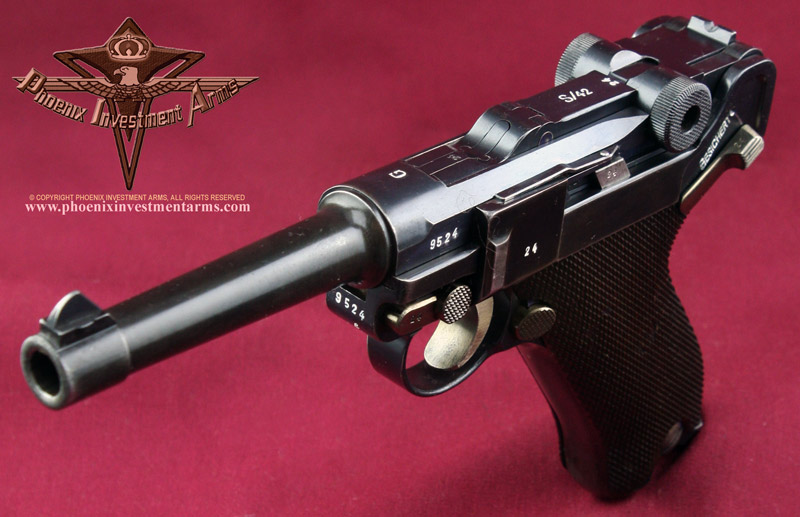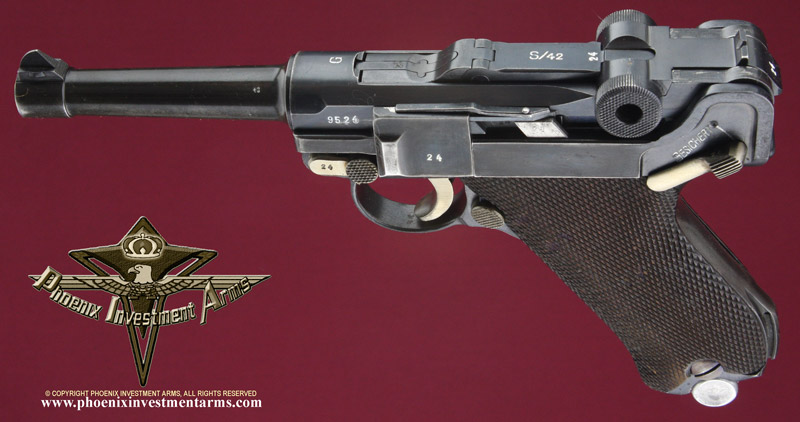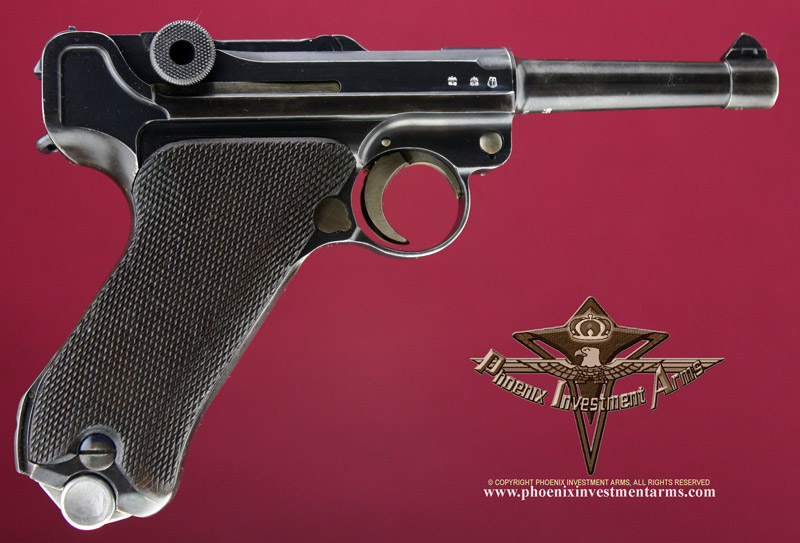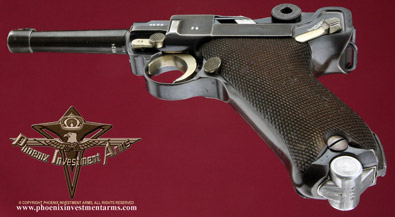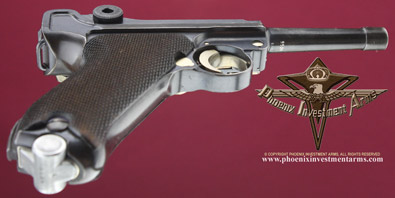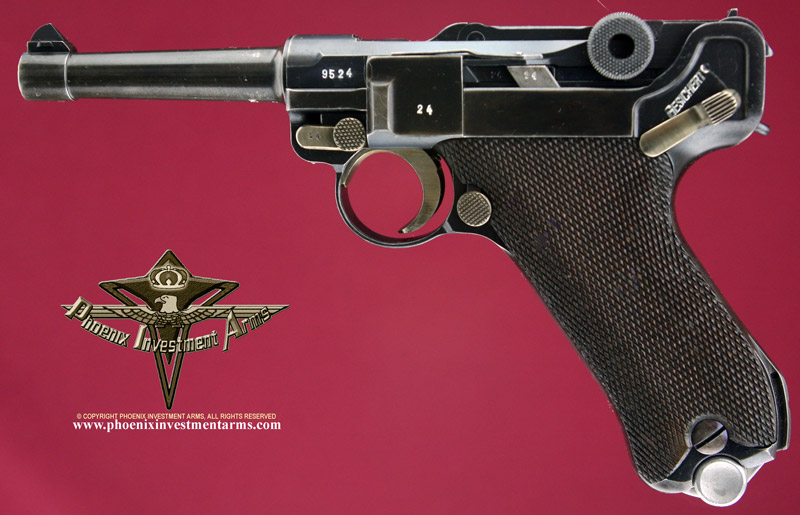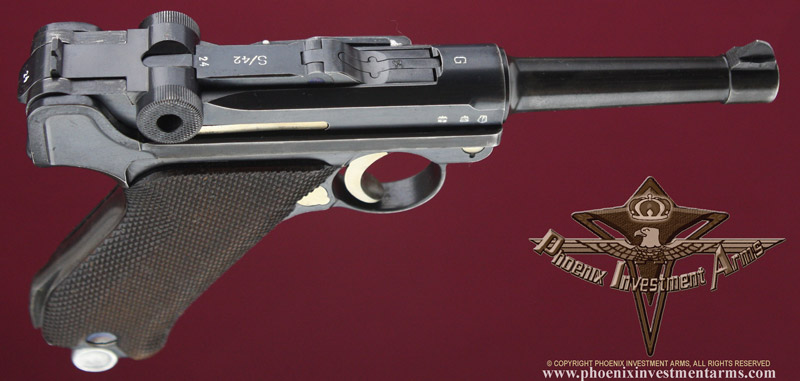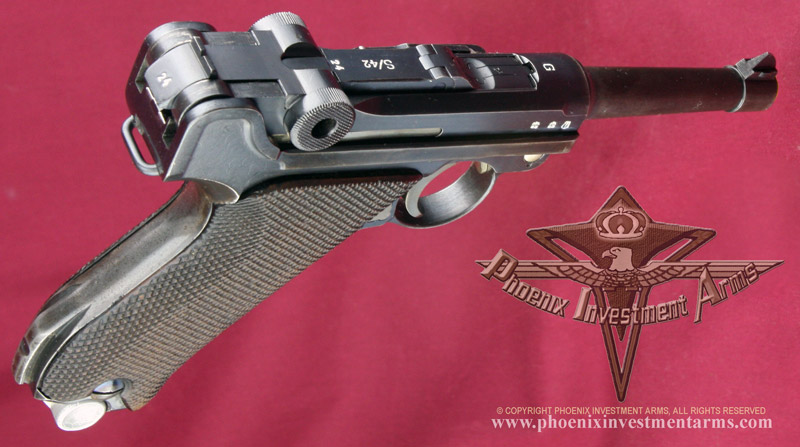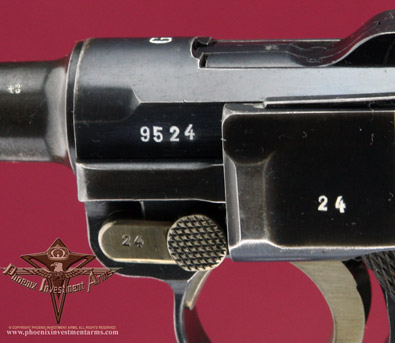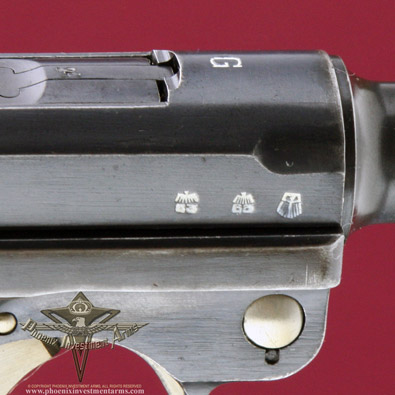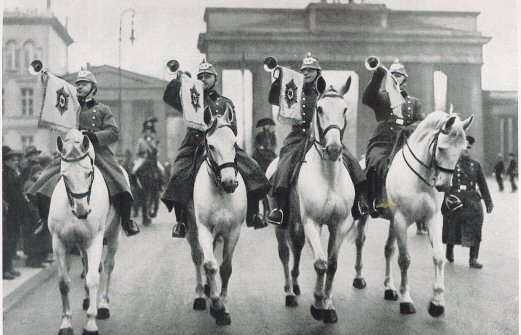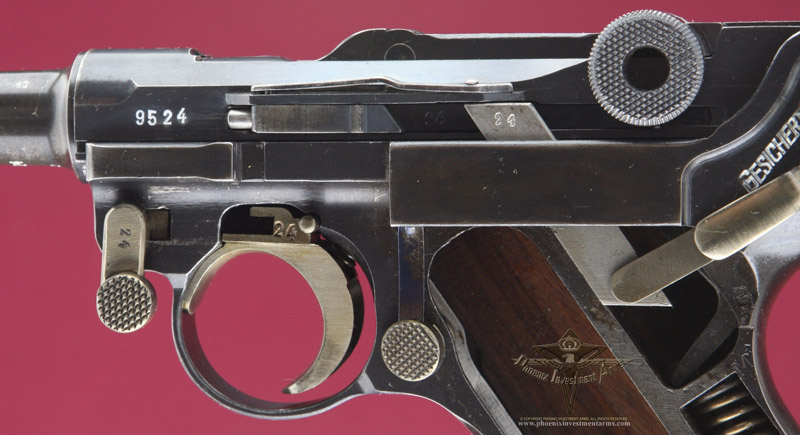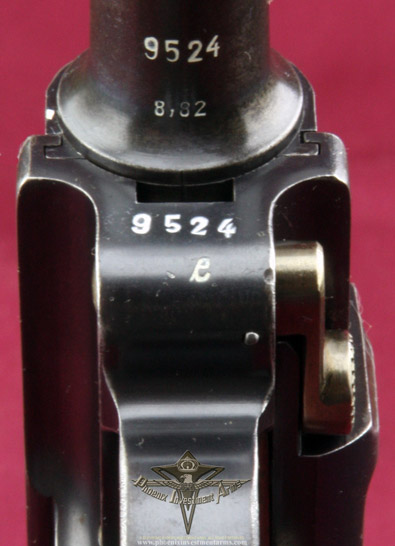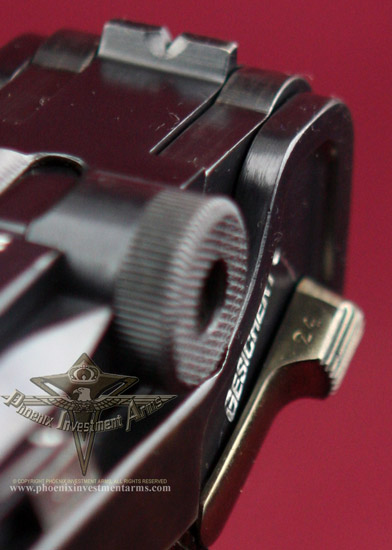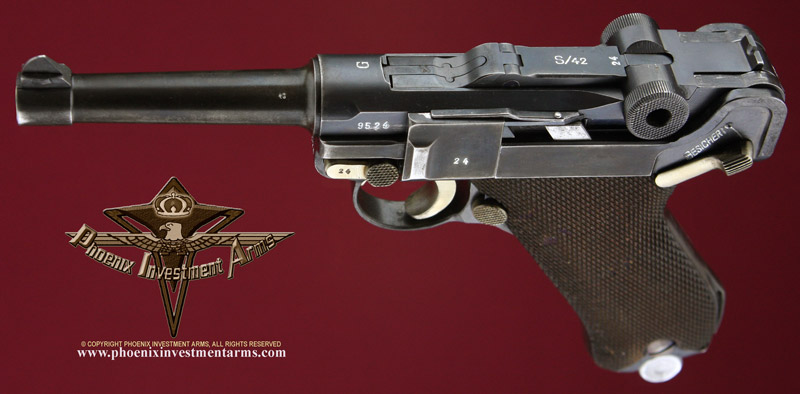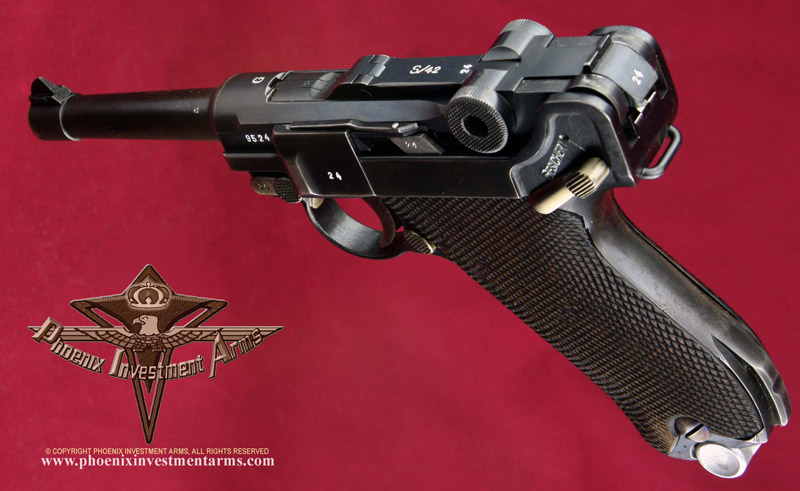|
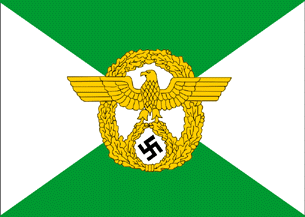
The Order Police (Ordnungspolizei) Banner |
After the collapse of the German
Military at the end of WWI the Bolsheviks saw their opportunity to
spread communism into the German state. The occupying Allies disbanded
the Sicherheitspolitei (SIPO) because it was "too military". The
SIPO had all the heavy weapons removed and forced to change the color of
their uniform.
Steps were taken in the early days
of the 3rd Reich to reverse this process with the creation of the
Landespolizei and was begun in Bavaria and quickly spread. Hermann
Göering became the first to organize in Berlin naming is the
Landespolizeigruppe. |
|
Serial number placement is in the military ("exposed") style.
The serial number appears on the front of the frame, on the side of the
locking bolt, on the trigger, on the bottom of the barrel, the side plate,
the left side of the receiver, the safety bar, the sear bar, the rear
connecting pin, and on the extractor. |
|
Hermann Göring as
the Interior Minister of Prussia issued a degree on Feb 22, 1933 raising
an Auxiliary Police (Hilfspolizei HIPS) from members of the SA & SS made
up of volunteers from the Prussian SA & SS and Stahlhelm and reached a
strength of 50,000.
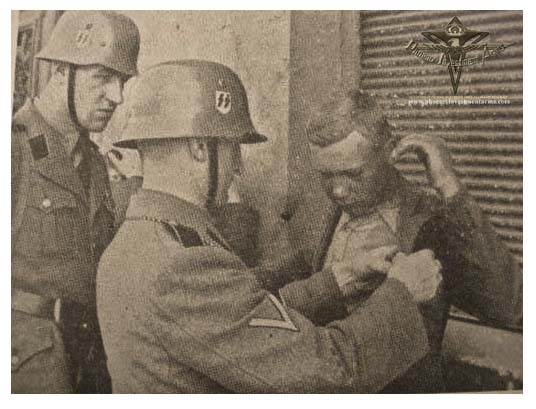
Here some SS personnel
are checking a demonstrators papers.
Right: The
magazines early police magazines were made by Haenel-Schmeisser and this
one is so early their manufacturing proof is displayed on the magazine.
Itself a collectors magazine.
|
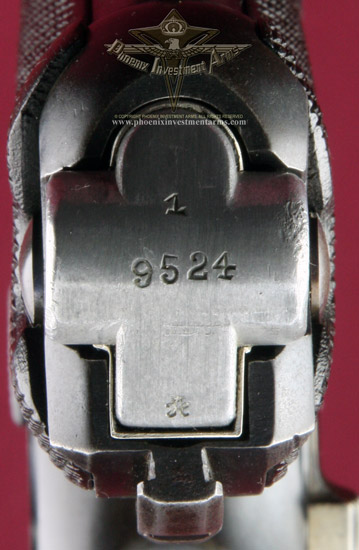 |
